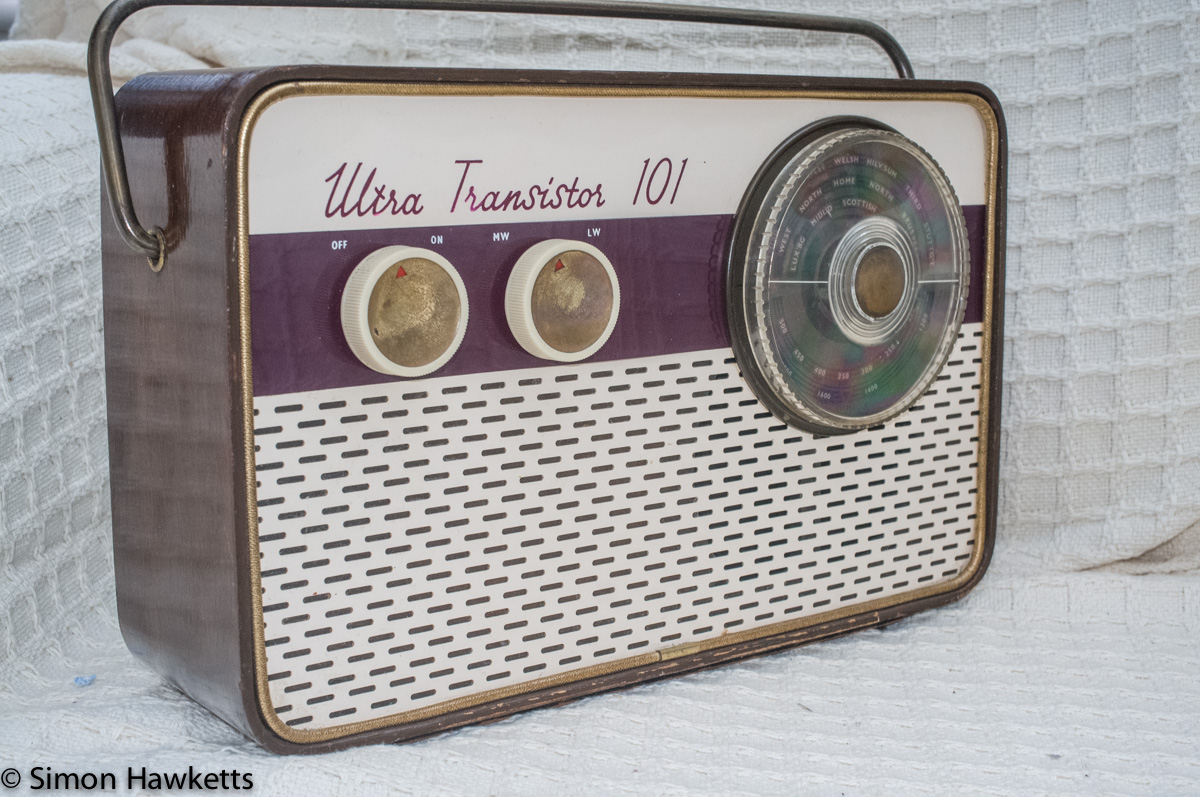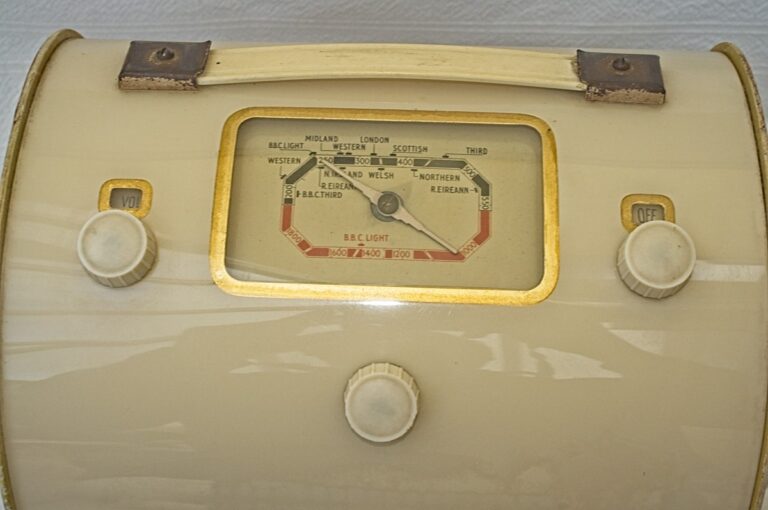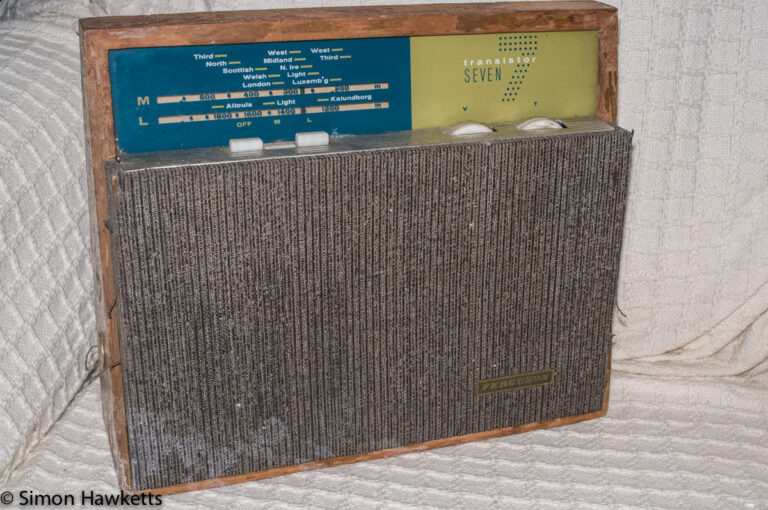Clean, Smart, mid-century radio – the Ultra Transistor 101 from 1959
The Ultra Transistor 101 radio set was made by the Ultra company in about 1959 and is a set that can be used as both a desktop model for the sideboard, or can be carried around with you to take your music outside during holidays or excursions.
My Ultra Transistor 101 radio
I added this radio to my small, but growing vintage radio collection recently because it fitted the parameters of radios I like to collect; it’s an attractive design, it has a wooden case (which means it’s unlikely to have shattered), and it uses a construction method that makes servicing and alignment easy.
It cost me a few pounds to purchase and have delivered from eBay, and I discovered when it turned up that it’s in fairly good shape for a radio that was first put together about a year after me. All the controls seem to mechanically work, and the knobs don’t have any dents or knocks, which is important if you want to keep the authentic look. This is particularly true of the tuning knob which is really difficult to replace unless you buy another copy of the same radio.
The front panel, which seems to be made from a plasticized hardboard, is also in good condition with all the transfers showing, and the visible part of the case itself just needs a bit of a clean and polish to be as new.
The bottom of the unit has got some flaky paint, but that should clean up and if necessary could be re-painted without too much trouble.
Internally, the actual chassis which the PCB is bolted to seems to be a bit loose in the cabinet, but I don’t yet know why this is.
Electrically, at the moment I don’t know if the radio is working because I don’t have a set of batteries to try it with. This model used two 4.5 V batteries in series to supply a -9v rail for the PHP transistors as well as a -4.5v rail which provides bias to the output stage transistors via the loudspeaker 1 .
I have purchased some AA battery holders which I’ll use to power the set and in the second part of this post, when I deal with the refurbishment and repair, I’ll explain any steps I had to take to get it working.
Pictures of the Ultra Transistor 101 radio

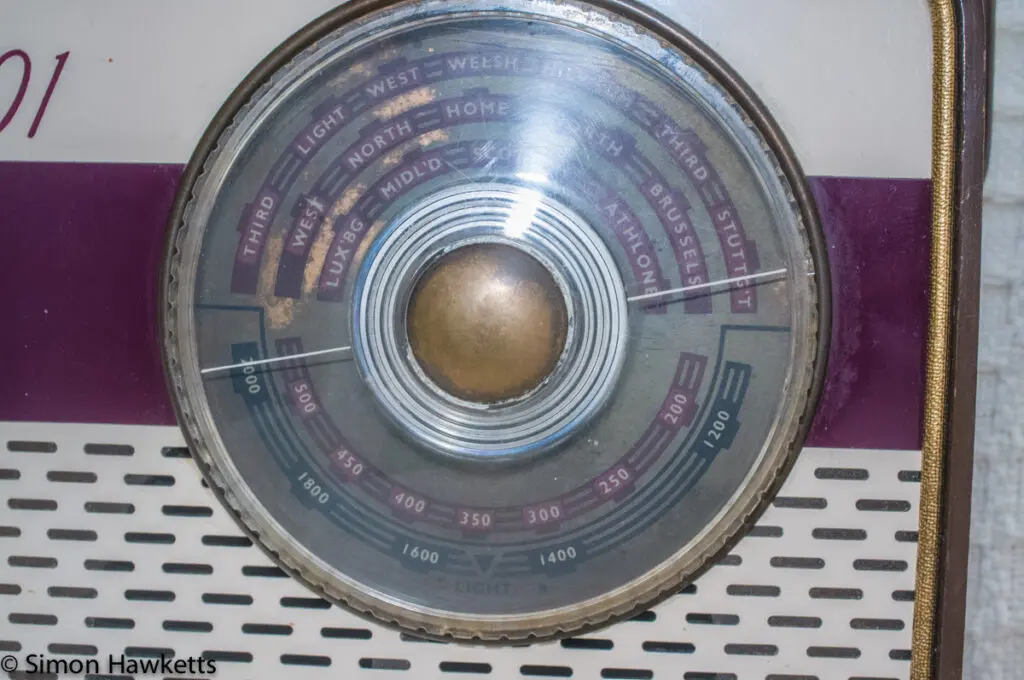

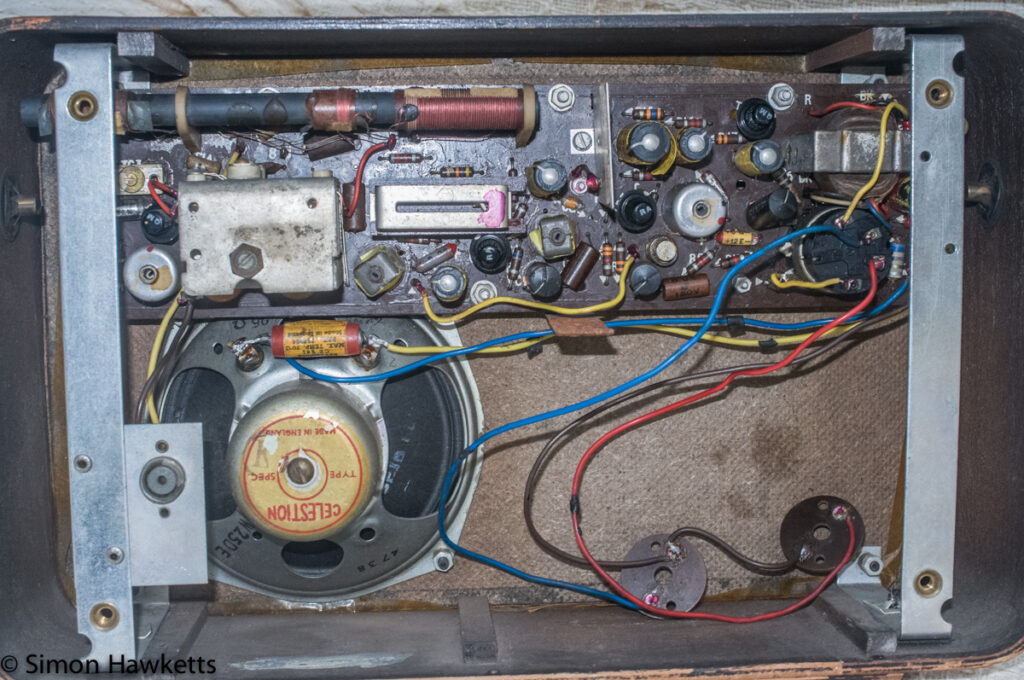

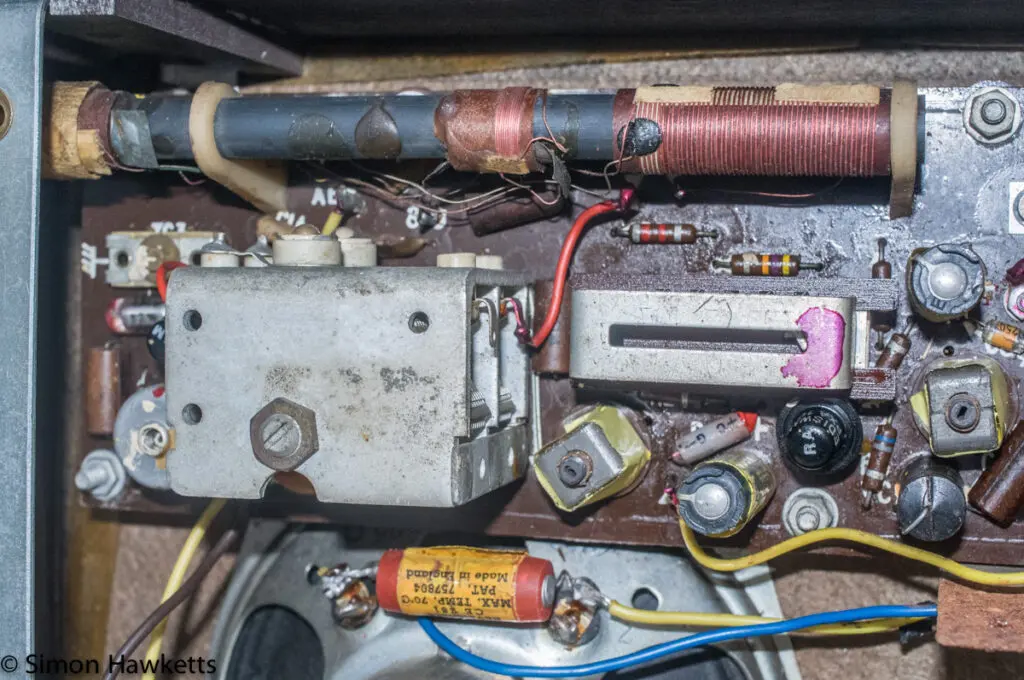
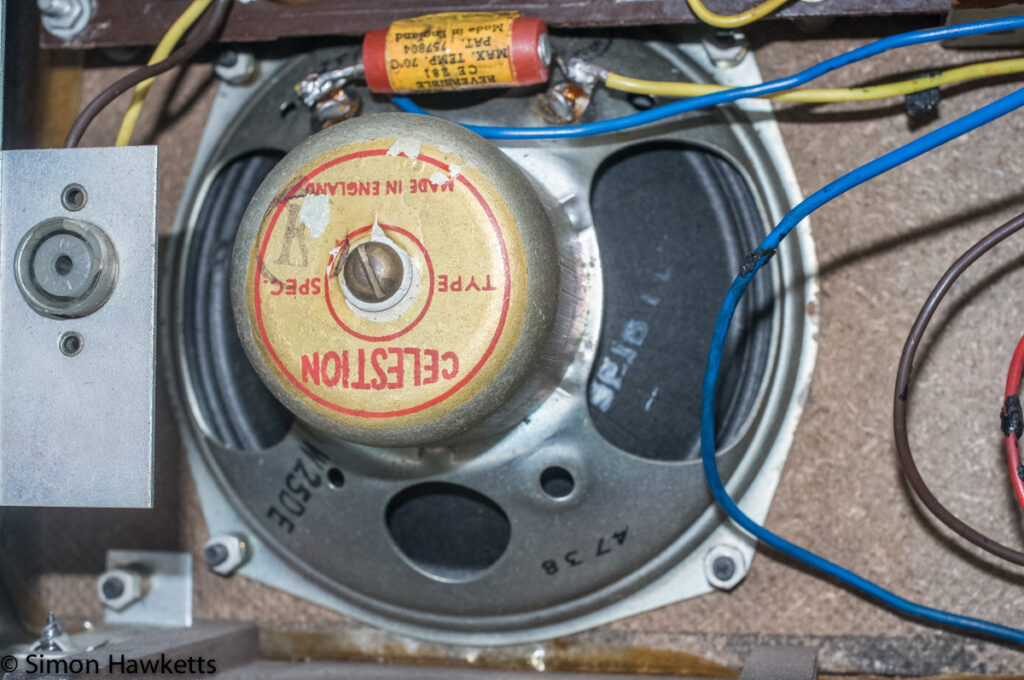
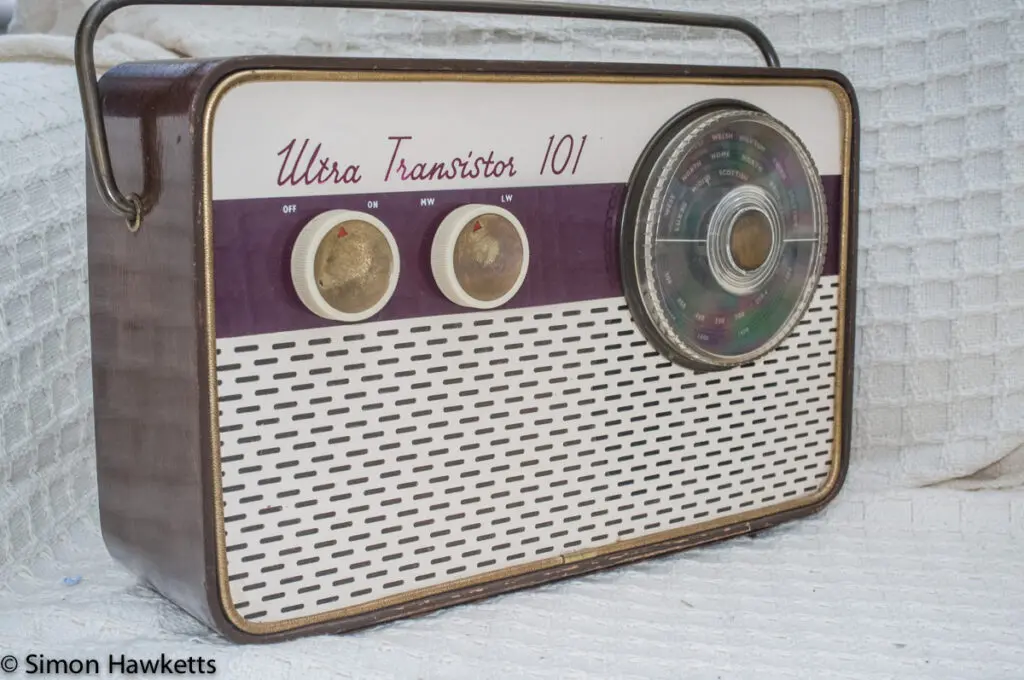
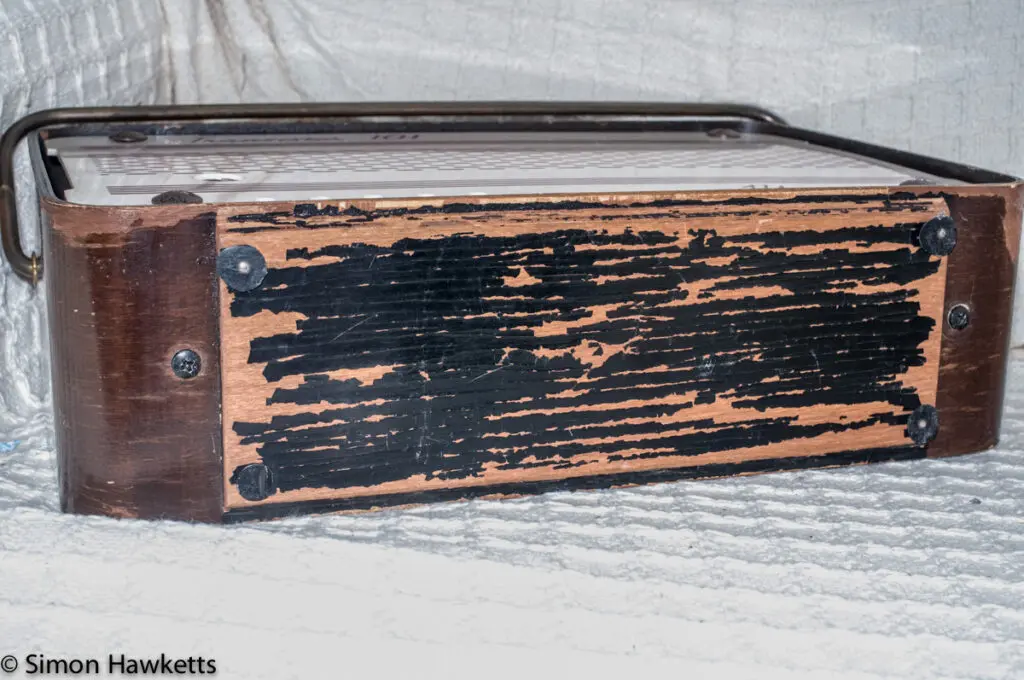
Description of the Ultra Transistor 101 radio
I’ve referred to this unit as the Transistor 101 in this article, but it is also known as model Ultra TR101.
As I said in the introduction, this radio can be thought of as both a desktop unit and a portable. It’s large enough to work as a desktop radio, with a reasonable sized speaker (about 4 inch), but the steel handle mounted in the two sides allow it to be carried around as well.
As is typical of radios made in the late 1950s, the waveband coverage is Medium wave and Long wave. The better quality VHF transmissions using Frequency Modulation started in the UK in 1955, and it took a few years before the transmissions were available in all regions and at a strength that allowed portable radios like the Ultra Transistor 101 to receive them, so most portable radios in 1959 would have been just MW and LW.
The case is made of wood (probably plywood I suspect) which is bent into a rounded rectangle and the internal chassis is formed around two bent steel straps which are fixed to the front panel. These straps are held in place with two screws at the bottom of the cabinet, which makes it very easy to get the whole of the internal electronics out of the case – just take the two screws out of the bottom and the unit slides out of the front of the case.
Electrically, the set is a conventional Superhet design with 6 transistors. The first transistor, an XA102 is used as a mixer/oscillator, and is followed by two stages of IF amplification which uses XA101 transistors. The AM signal is detected using a small signal diode and the resultant audio is fed into a two stage audio amplifier using an XB103 driver transistor and two XC101 transistors driving the loudspeaker.
The tuning dial on the front panel directly drives the tuning capacitor, but the rotary wave change switch works through a mechanical coupling to change a slide switch which is mounted on the PCB next to the tuning capacitor.
The set receives its signals with an internal ferrite rod aerial, and there is an external aerial socket on the back panel which is connected to a mid-point on the medium wave aerial winding on the rod. In 1959, I guess it was common for householders to put up an aerial to improve their coverage of distant stations.
All the electronics of the set is built into the single PCB which is fitted at the top of the unit and since the set is easy to get apart I would suspect that it’s probably quite easy to work on.
Ultra Transistor 101 Service data
The label inside the set records the model number as TR101, which I found listed in my Radio & TV servicing volume for 1960/61, but this simple refers back to a model from the year earlier, TR100. I’ve therefore included a scan of the circuit from that earlier volume here.2
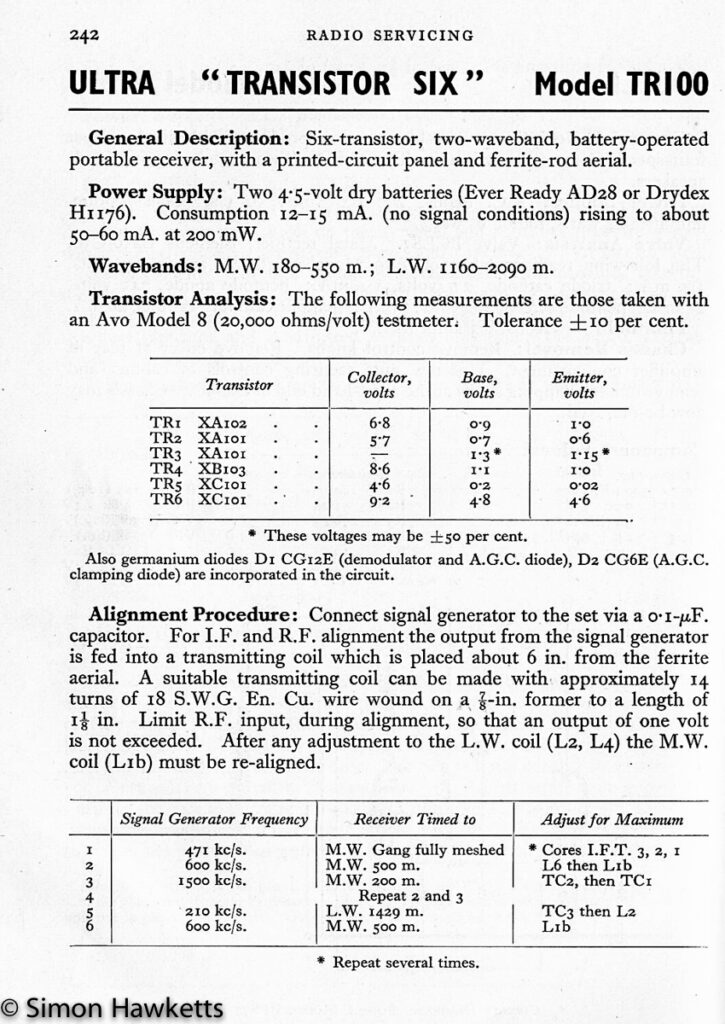

- Although I don’t have a great deal of experience with vintage radios, this arrangement looks odd – I wish my Dad was still around to ask him, he had a lot of experience with radio sets. [↩]
- The normal copyright note that I’ve applied to other vintage radio articles applies – I don’t think this is a breach of copyright and I’ve seen other sites publishing copies of the circuit diagram, however, if it turns out this is a breach I will remove this section. [↩]
Discover more from Everything Vintage
Subscribe to get the latest posts sent to your email.

